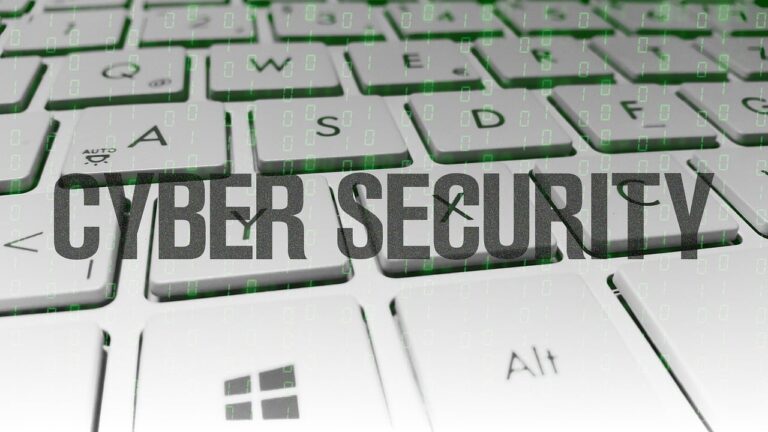What Are The Considerations When Setting Up Multi-factor Authentication?
Setting up multi-factor authentication is an essential step to ensure the security of your digital accounts. As technology advances and cyber threats become more sophisticated, relying solely on a password is no longer enough. With multi-factor authentication, an extra layer of protection is added by requiring additional factors such as a fingerprint scan or a unique code sent to your mobile device. However, before diving into the setup process, it is crucial to consider a few key factors that will help you choose the right method and ensure a seamless user experience. By taking into account factors such as user convenience, scalability, and compatibility with different devices and platforms, you can enhance the security of your accounts while providing a user-friendly experience for yourself and your team. Setting up multi-factor authentication (MFA) is an important step in enhancing the security of your accounts and data. By requiring multiple factors for authentication, MFA adds an extra layer of protection against unauthorized access. However, it’s crucial to consider several factors to ensure that the implementation of MFA is effective and efficient. In this article, we will explore the key considerations when setting up multi-factor authentication.
Choosing the right authentication factors
When implementing multi-factor authentication, it is essential to select the appropriate authentication factors that offer strong security without compromising usability. There are various types of factors to choose from, including knowledge factors, possession factors, inherence factors, adaptive factors, and biometric factors.
Knowledge factors involve something the user knows, such as a password or a PIN. Possession factors require the user to possess a physical device, such as a smartphone or a security token. Inherence factors include biometric characteristics, such as fingerprint or facial recognition. Adaptive factors adjust the authentication requirements based on contextual information, such as the user’s location or behavior patterns. Biometric factors utilize unique biological attributes, like fingerprints or iris scans. Each type of factor has its advantages and considerations, and selecting the most appropriate ones depends on the specific use case and the level of security desired.
Understanding the user experience
While enhancing security is critical, it’s equally important to consider the user experience when implementing multi-factor authentication. Simplicity and convenience are key factors that can influence user acceptance and adoption. The authentication process should be straightforward and easy to understand, avoiding unnecessary complexity that might frustrate users. Providing clear guidance and training will help users navigate the authentication process smoothly.
Accessibility is another essential aspect of the user experience. The chosen authentication factors must be accessible to users with different abilities and should support different platforms, including mobile devices, desktops, and other relevant devices. Additionally, user training and guidance are crucial to ensure that users understand how to properly authenticate themselves using the chosen factors.
Security and usability trade-offs
When implementing multi-factor authentication, there is often a trade-off between security and usability. The strength of the factors used for authentication is a critical factor to consider. While stronger factors, such as biometrics, offer higher security, they can also introduce additional user burden and potential usability challenges. It’s important to strike a balance between security and convenience to ensure that the authentication process is both secure and user-friendly.
Fallback options are also worth considering as they allow users to authenticate in the event of factors becoming unavailable or malfunctioning. However, providing fallback options can introduce additional security risks, so careful consideration should be given to implementing them effectively.
Risk assessment is another crucial aspect to consider when determining the appropriate security measures. Understanding the potential threats and risks specific to your organization will help identify the most appropriate authentication factors and security measures to implement.
Integration with existing systems
When setting up multi-factor authentication, it’s important to consider how it will integrate with your existing systems. Compatibility with authentication protocols is crucial to ensure a seamless authentication process across various platforms and systems. Additionally, integration with identity management systems can help streamline the user provisioning and deprovisioning process, ensuring that access is granted and revoked appropriately.
Integrating multi-factor authentication with single sign-on solutions can provide a unified and simplified user experience. Users can log in once and gain access to multiple systems or applications without the need for repeated authentication. This not only enhances convenience for users but also reduces the administrative burden of managing multiple credentials.
Regulatory compliance
Compliance with industry regulations and data protection laws is a critical consideration when implementing multi-factor authentication. Depending on your industry and the type of data you handle, specific regulatory requirements may mandate the use of MFA. Ensuring that your chosen MFA solution meets these requirements is essential to avoid potential legal and financial consequences.
Audit and reporting capabilities should also be considered. The ability to track and monitor authentication events, as well as generate comprehensive reports, helps demonstrate compliance and provides valuable insights into potential security breaches.
Authentication security standards, such as FIDO (Fast Identity Online), should be considered to ensure that your chosen solution aligns with recognized best practices and standards.
International compliance is another significant consideration, especially if your organization operates globally. Different countries may have specific regulations or requirements, and it’s important to ensure that your MFA implementation aligns with these international compliance standards.
Administrative overhead
Implementing and managing multi-factor authentication can introduce additional administrative overhead. Considerations such as user enrollment and management should be taken into account. Providing a streamlined process for enrolling users into the MFA system and managing their authentication factors is essential for a smooth implementation.
System configuration and maintenance should also be considered. The MFA solution should integrate seamlessly with your existing infrastructure without significant disruption or additional complexities.
User support and troubleshooting should be addressed to ensure that users have access to resources and assistance when encountering authentication issues. Establishing clear supervisor and administrator roles will help ensure that the implementation and management of MFA are carried out efficiently and effectively.
Centralized control and reporting are important for administrators to have visibility and control over the MFA implementation. This includes the ability to enforce specific policies, monitor usage, and generate reports on authentication events.
Training and education
User awareness and education play a crucial role in the successful implementation of multi-factor authentication. Providing clear and concise user training resources will help users understand the importance of MFA and how to use it effectively. Security policies and guidelines should be communicated to users to ensure that they are aware of their responsibilities in maintaining security.
Encouraging users to report security incidents will help identify and address potential vulnerabilities promptly. Regular security reviews should be conducted to assess the effectiveness of the MFA implementation and identify areas for improvement.
Emergency access
Consideration should be given to emergency access when implementing multi-factor authentication. Backup authentication methods should be available in case users are unable to access their primary authentication factors. This could include backup codes, alternate contact methods, or secondary authentication mechanisms.
Emergency administrator access is also crucial in situations where users may be locked out or unavailable. Establishing procedures for emergency access, including granting temporary administrative privileges, will help ensure that critical tasks and system access can be maintained.
Offline authentication options should also be considered, especially in environments where internet connectivity may be limited or unavailable. This allows users to authenticate securely even in offline scenarios.
Emergency recovery procedures should be established to address potential scenarios such as lost or compromised authentication factors. This may include resetting or reissuing authentication factors to regain access to accounts.
Implementing risk mitigation strategies, such as effective user authentication monitoring and incident response procedures, is important to mitigate potential risks and minimize disruptions caused by emergency situations.
Backup and recovery
Backup and recovery mechanisms should be in place to mitigate the risk of losing access to accounts and data in the event of hardware failure, system crashes, or other unforeseen circumstances. This includes regular backups of authentication data and the ability to restore this data in case of loss or corruption.
Monitoring and incident response capabilities are crucial to detect and respond to potential security incidents or unauthorized access attempts. Real-time monitoring helps identify suspicious activities, while anomaly detection can detect unusual user behavior patterns that may indicate a security breach.
Logging and auditing should be implemented to keep track of authentication events for forensic purposes and regulatory compliance. Incident response procedures should be established to ensure that potential security incidents are addressed promptly and effectively.
Integrating threat intelligence capabilities into the authentication process can help identify and mitigate potential threats by leveraging up-to-date information on emerging security risks.
In conclusion, setting up multi-factor authentication requires careful consideration of various factors, including the choice of authentication factors, user experience, security and usability trade-offs, integration with existing systems, regulatory compliance, administrative overhead, training and education, emergency access, backup and recovery, and monitoring and incident response. By addressing these considerations comprehensively, organizations can enhance the security of their systems and protect their sensitive data effectively.








